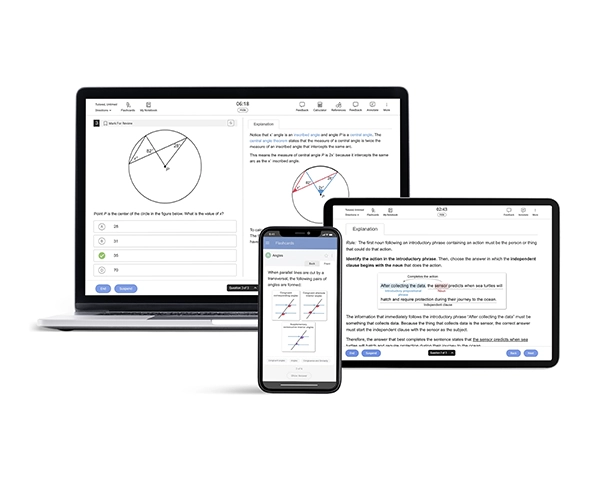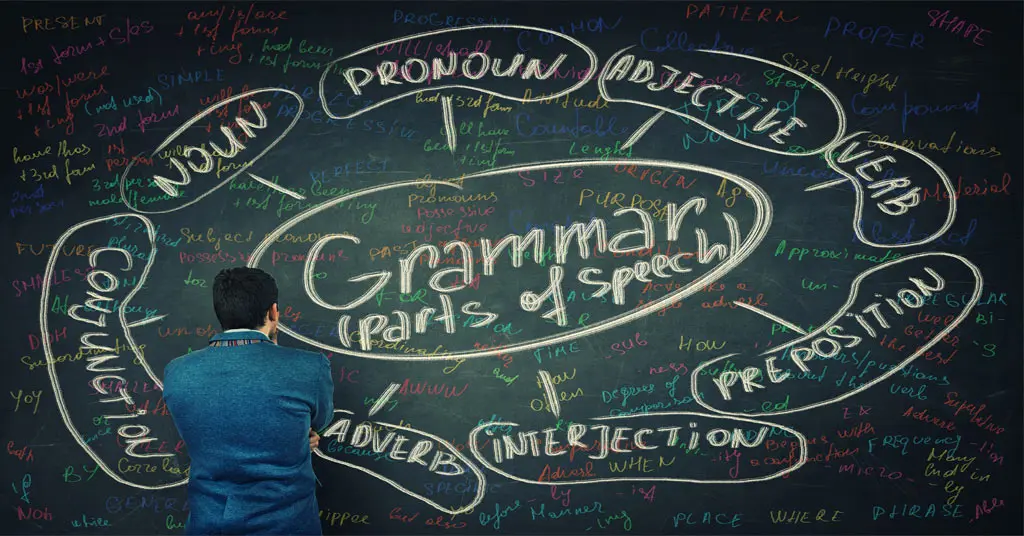What is Tested in Data Analysis and Problem-Solving Questions?
These problems focus on real-life relationships and patterns represented by graphs, ratios, percentages, and rates. Some questions will require many steps. This question type’s primary goal is assessing your skills with quantitative data.
The College Board® explicitly states that these questions will ask you to:
- Solve for percentages
- Determine unit measurements and conversion rates
- Evaluate methods of data collection
- Evaluate connections between a graph and multiple variables
- Evaluate variable relationships that are represented in scatterplots or other linear, quadratic, and exponential representations
- Determine whether an expression of two variables describes linear or exponential growth
- Find ratios and rates through proportional relationships and scale drawings.
- Use sample data (and information like measures of error, measures of center, and measures of spread) to make inferences about population parameters.
Format of Data Analysis and Problem-Solving Questions
Data analysis and problem-solving questions will be formatted in both the multiple-choice style and grid-in style.
You will find these types of questions only within the calculator section of the SAT® Math exam, and you should know that they will make up 17 of the 58 questions on the SAT Math exam.
Types of Questions
Questions That Assess Your Quantitative Reasoning Skills
- These questions assess your understanding of ratios, rates, and proportions. Pay attention to the relationships displayed by the ratios. You should know that you can often use fractions to simplify your understanding of a real-world example.
These questions can be complicated by varied units of measurement. Pay attention to the details to ensure you find the correct value in the correct unit of measurement.
- You will encounter real-life circumstances, including trends or correlations provided in science and social science studies.
Example:
- This weekend, 15,650 people visited the amusement park. The ratio of children to adults was 3 to 1. How many adults visited the park?
Questions That Evaluate Your Understanding of the Relationships Displayed in Graphs
- The relationships between variables in a graphic can be represented through expressions. You will likely use or evaluate functions that display trends or correlations.
There will be a strong focus on how linear, quadratic, and exponential relationships are shown in a graphic.
Examples:
- According to the best fit line, what trend can be predicted given ____?
- According to the best fit line, how long was this trend occurring?
- In this context, what is the [slope, y-intercept, or x-intercept] of the line of best fit?
- Which of the following functions best represents the growth over time?
Questions That Test Your Skills Evaluating Statistical Information and Probability Models with One Variable or More Than One Variable
- Single variable representations can be dot plots, histograms, and frequency tables. Multi-variable representations can be presented as scatterplots, line graphs, and two-way tables.
- You should know how to analyze different kinds of data in any of these models.
- Focus on conditional probability, measures of center (like means and medians), and measures of spread (like the range and the standard of deviation)
- You should also have a strong conceptual understanding of margin of error, methods for selecting populations, and percentage trends and variations.
You can gain experience with this question type through UWorld’s SAT Prep Course. The prep course offers thousands of practice problems, thorough question explanations, and performance tracking tools. Use these resources to streamline your study plan and boost your scores on the SAT Math test.
Remember, data analysis and problem-solving questions make up 17 of the 58 questions in the Math section. Improving your performance with these questions can substantially improve your performance on the SAT Math test.




